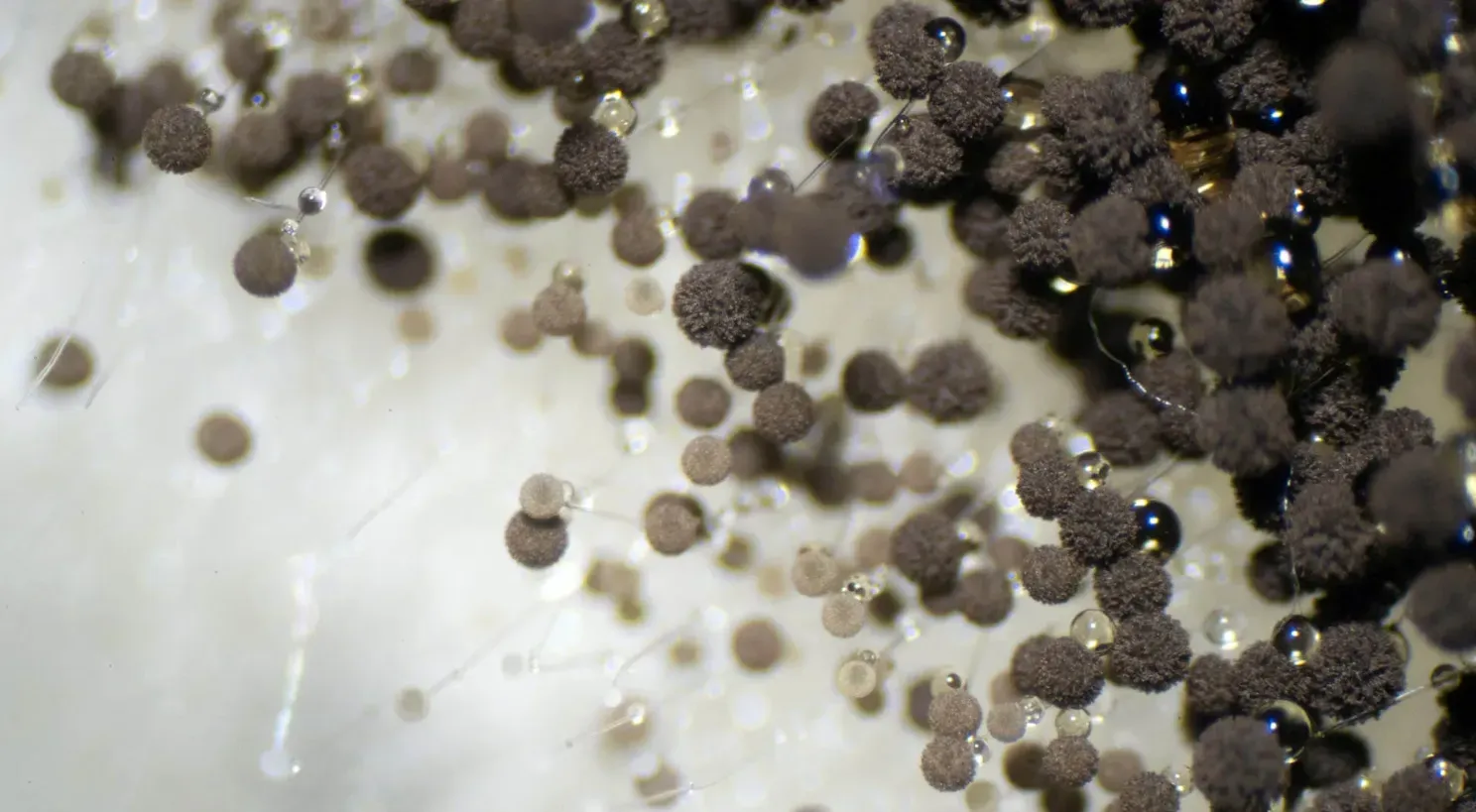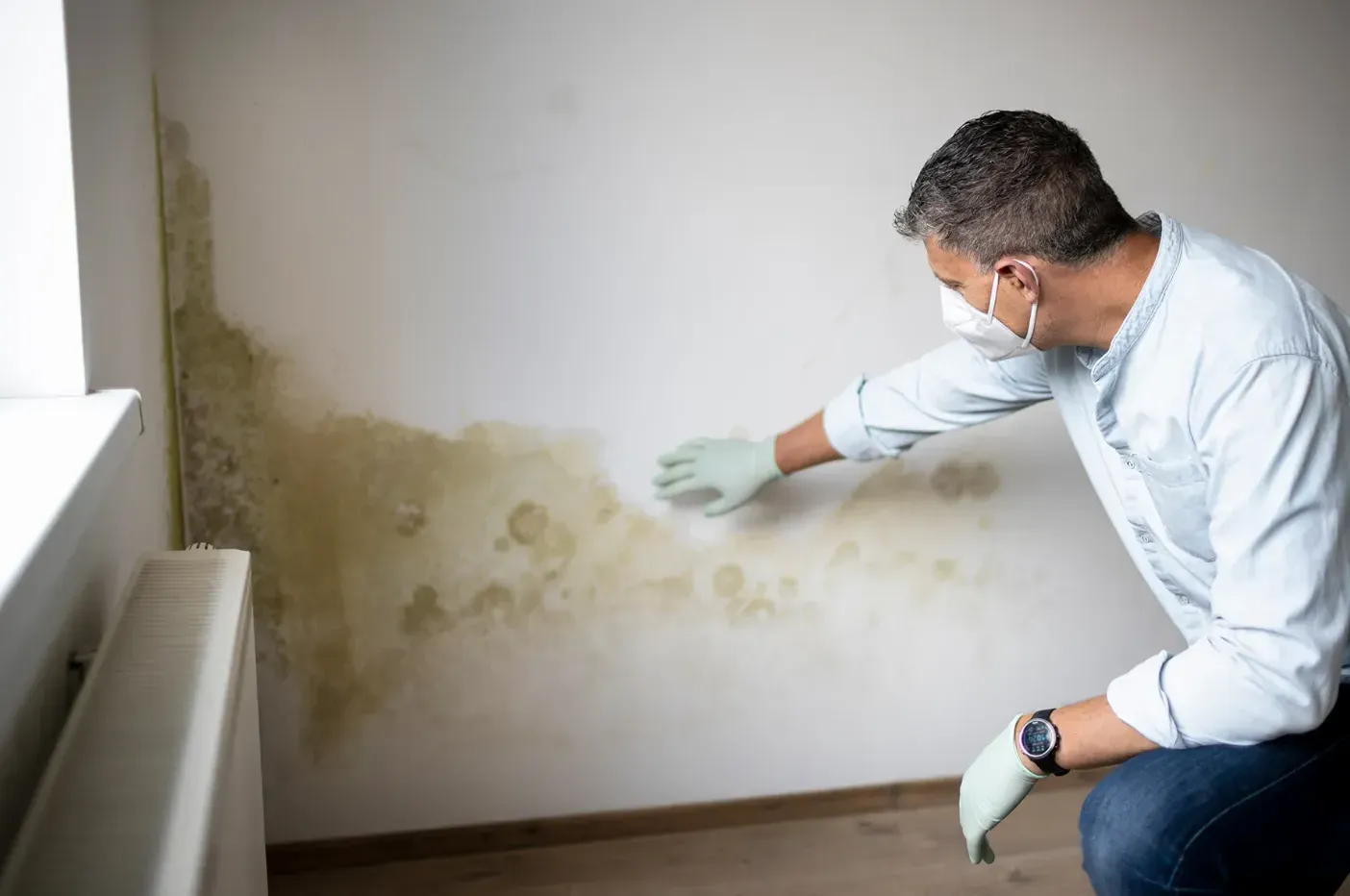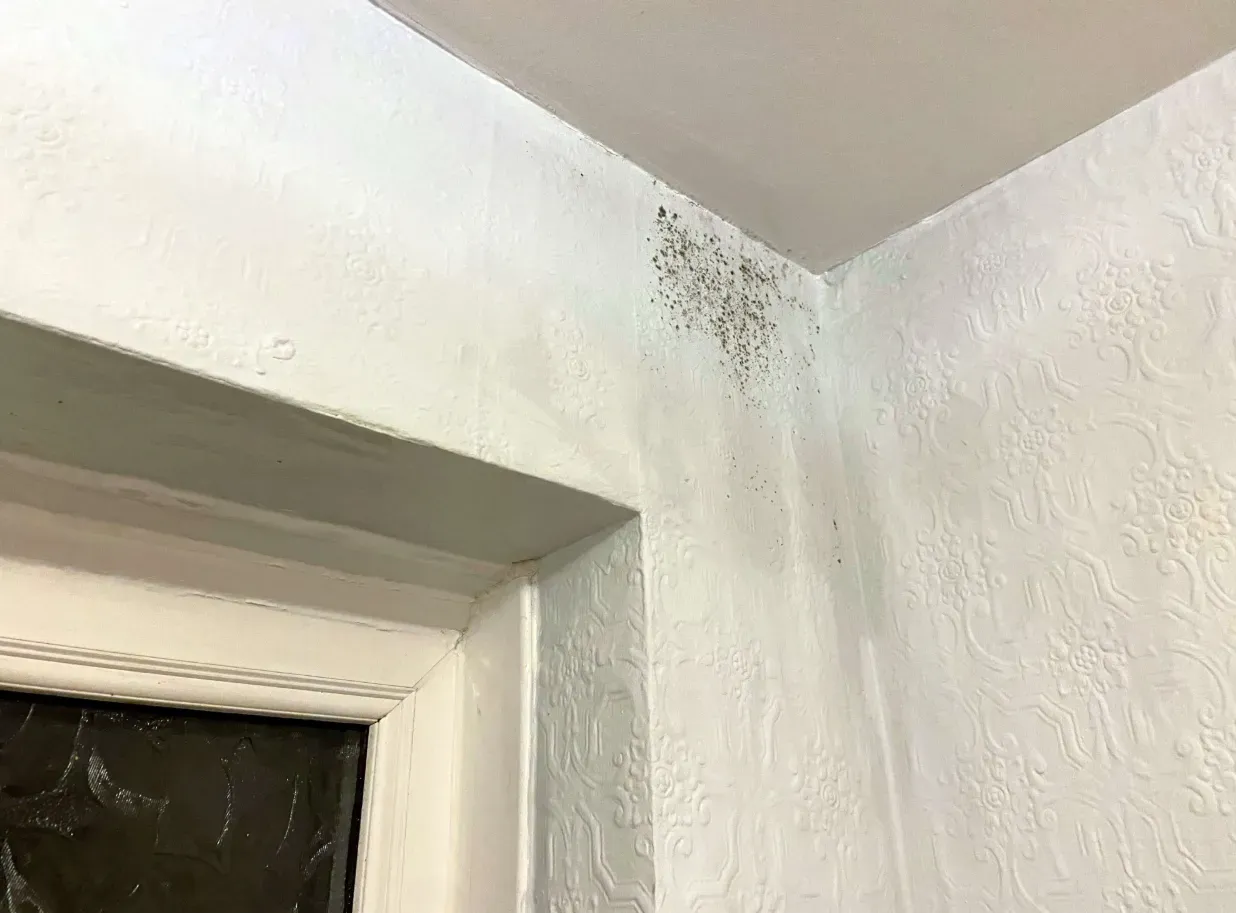The Hidden Dangers of Dampness and Mold: How to Identify, Prevent, and Fix the Problem

By
Shrusti Naik
Posted on September 16, 2025. 10 mins

The Hidden Dangers of Dampness and Mold: How to Identify, Prevent, and Fix the Problem

Dampness and mold in your home are more than cosmetic issues, they pose serious health, structural, and financial risks. In many parts of India, monsoons, high humidity, sub-standard construction, or deferred maintenance worsen these problems. In this article, we explore how common the issue is in India, how to identify different kinds of wall fungus (white, black, yellow etc.), the health impacts, preventives, and treatment strategies. By the end, you'll be equipped to protect your home and family.
Key Stats (India / Relevant Regions, 2023-2025)
- ~50% of surveyed homes in southern India reported dampness problems in walls or ceilings.
- In Pune, doctors report increasing cases of allergies, respiratory distress, and hypersensitivity pneumonitis tied to moldy/damp walls in homes.
- Exposure to moisture in homes is statistically related to increased rates of acute respiratory infection, sinusitis, cough, and breathlessness among occupants. Besides, you can also check out our guide on new home essentials if you are searching for specific essentials that are required in a new house.
What Are Mold, Fungus, and “Fungus on Walls”?
Mold (or mould) refers to molds/fungi that grow in damp, humid conditions. They thrive on porous surfaces (plaster, concrete, wood) and visible growth may appear as patches, spots, or stains of various colours (black, green, white, yellow). The terms “black fungus”, “white fungus”, “yellow fungus” are often used colloquially in India, especially after the COVID-19 era, typically referring to different fungal infections in humans rather than wall molds. But some overlap and confusion exist between environmental molds (on walls) and invasive fungal infections (in people). Besides, you can also check out our guide on 9 pooja room ideas that can help in elevating your pooja room along with the glass door design.
Colours & What They Might Indicate
| Colour / Name | On Walls / Materials | Possible Organisms / Causes |
|---|---|---|
| Black spots / Black mould | Dark patches on damp plaster, around leaks, bath corners | Molds like Aspergillus niger, Stachybotrys, or other dematiaceous fungi; high moisture; condensation |
| White patches / Powdery / White fungus | White powdery or fuzzy growth on walls or wood | Likely Cladosporium, Penicillium, or Candida on very damp surfaces; perhaps salts efflorescence in some cases |
| Yellowish stains, yellow fungus (coloured mold) | Yellow patches around damp patches, slow spread | Various molds, possibly Aspergillus flavus in humid conditions; sometimes misidentified when people refer to medical ‘yellow fungus’ infection after COVID-19. |
Besides, you can check our guide on wall painting design that can give you ideas to elevate not only your glass door but also the walls in your abode.
Health Risks of Mold & Dampness in Indian Homes
Mold and damp environments carry real health hazards, particularly in tropical/humid zones, poorly ventilated houses, or during monsoons. Key risks include:
- Respiratory symptoms: cough, wheezing, phlegm, asthma exacerbations, bronchitis.
- Allergies: itchy eyes, runny nose, sneezing.
- More serious conditions: hypersensitivity pneumonitis; in immunocompromised people or those with underlying disease, risk of invasive fungal infections (e.g. mucormycosis / “black fungus”) increases.
- Psychological and quality of life effects: musty smell, discomfort, sleep disruption.
Common Causes & Contributing Factors (India-Specific)
Understanding what causes dampness and fungus problems helps in prevention.
- Heavy seasonal rains, monsoons; leakage from roofs, plumbing pipes.
- Poor drainage around foundations; rising damp.
- Lack of waterproofing or damp-proofing in construction.
- Poor ventilation in kitchens, bathrooms, roofs; sealed windows without airflow.
- High indoor humidity, especially in coastal or hill areas.
- Use of porous wall materials without protective coatings.
- Neglect of maintenance (plaster cracks, peeling paint, water seepage).
How to Identify Mold / Fungus Problems Early
Being proactive helps you avoid escalation. Watch for:
- Visible patches: irregular spots, discolouration (black, white, yellow) on walls, ceilings.
- Musty smells or damp odours.
- Condensation on windows, cold walls staying damp.
- Peeling paint, salt deposits, blistering.
- Health symptoms among family members (coughing, sneezing, skin irritation) that improve when away from the house.
If large areas are involved (more than 1 square meter), or if immunocompromised people are affected, professional evaluation may be needed.
How to Get Rid of Fungus from Walls & Fix Dampness
Here are practical steps, from immediate remedies to long-term fixes.
Short-Term / DIY Measures
-
Dry the area & eliminate moisture source
- Stop leaks, repair plumbing, seal roof junctions.
- Use fans, exhaust fans, dehumidifiers if feasible.
-
Clean the surface
- Mild detergent + warm water scrub to remove visible mold.
- Use vinegar or baking soda on small localized areas.
- Hydrogen peroxide (3%) works on solid, non-porous surfaces—let it sit, scrub, and dry thoroughly.
-
Disinfect / apply antifungal agents
- Use antifungal paints or coatings specially formulated for mould prevention. These often have fungicidal additives.
- Avoid painting over damp walls without allowing them to dry; else mold returns.
Long-Term / Structural & Maintenance Fixes
| Type | What to Do | Benefit |
|---|---|---|
| Waterproofing | Roof waterproofing, external wall coatings, damp-proof course (plinth level), seal joints and windows | Prevent water ingress, protect structure |
| Material & finish choices | Use less porous plaster, well sealed grout, repellant or antifungal paints | Reduces moisture retention and colonisation |
| Ventilation design | Exhaust fans, cross-ventilation, vents in roof spaces, avoid enclosed damp spots | Lowers humidity, keeps surfaces dry |
| Regular maintenance | Clean gutters, repair leaks, maintain paint & plaster, inspect roofs/tiles before monsoon | Early detection prevents small issues becoming big ones |
Also read Eco Friendly Homes: A Comprehensive Guide to Living Sustainably
White, Black, Yellow Fungus: Medical Concerns & Distinctions
Some people conflate environmental mold/fungus on walls with medical fungal infections (e.g. black fungus / mucormycosis). Important to clarify differences:
- Environmental mold (on walls etc.) mostly affects people via inhaled spores or allergens; localised, treatable by cleaning.
- Medical fungal infections (black fungus / white fungus / yellow fungus in medical parlance) are invasive, often in people with weakened immunity (COVID-19 recovery, uncontrolled diabetes, steroid use). These require medical diagnosis and treatment.
So, killing mold on walls helps reduce risk but does not substitute for medical care if infection occurs internally.
Prevention Checklist
- Inspect roof, plumbing, balcony surfaces before heavy rain.
- Keep indoor humidity below ~60% (use dehumidifiers or air-conditioners).
- Ventilate kitchens, bathrooms; hood exhausts and fans.
- Use antifungal / waterproof paints in vulnerable areas.
- Fix leaks immediately; maintain external waterproofing.
- Use washable wall paints and avoid porous surfaces where possible.
- Clean mold visible surfaces as soon as spotted.
Take a look at Sustainable and Energy-Efficient Home Solutions Designed for Indian Climates
When to Seek Professional Help
- Mold spread over large area (>1 m²).
- Recurring mold despite DIY fixes.
- Suspected structural dampness (rising damp, wall-core dampness).
- Health issues like asthma exacerbation, recurrent chest infections, or invasive fungal signs (facial swelling, blackish discharge, etc.).
- Homes in very humid/coastal/hilly zones with chronic issues.
Conclusion

Dampness and mold are hidden threats that affect many Indian households, especially in humid regions and those with construction or maintenance challenges. They compromise health, reduce property value, and can lead to serious medical conditions if not managed. The good news is, once identified, mold can be eliminated and prevented with the right combination of good construction, maintenance, ventilation, and timely treatment. By staying vigilant, using correct materials, and keeping moisture under control, you can protect your home and your health.
If you are looking for accommodation in Mumbai, Jugyah provides assistance and eases the search process using it's smart technology.
Frequenty Asked Questions
-
How to kill black fungus on walls at home?
Use a detergent wash followed by a fungicidal agent or antifungal paint. For non-porous surfaces, hydrogen peroxide (3%) or bleach diluted solutions can help. Always dry well. Wear protective gear (mask, gloves) because black mold spores can trigger respiratory issues. -
What are yellow fungus symptoms in people (not walls)?
Commonly reported in India (especially among immune-compromised persons), yellow fungus symptoms include lethargy, loss of appetite, weight loss, sunken eyes, sometimes pus formation or necrosis. If these appear, especially after illness or steroid use, seek medical attention. -
What is white fungus name and how serious is it?
“White fungus” in Indian media usually refers to invasive fungal infections caused by Candida species (or mixed fungal pathogens). Can cause lung, skin or organ involvement, more serious in immunocompromised people. Not the same as superficial wall mould. -
Is black mould exposure in home dangerous even if one is healthy?
It can be. Allergic reactions, eye/nose irritation, coughing are common. Long-term exposure in badly ventilated, damp homes may increase risk of respiratory issues. But serious invasive disease is rare in healthy people. -
Can painting over mould hide the problem?
Yes—painting over active mould without fixing dampness basically covers up the symptoms. Without drying, disinfecting, and waterproofing, mould will return. Use antifungal paint only after surface is cleaned and dry.